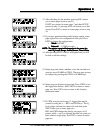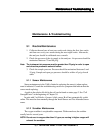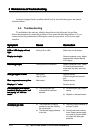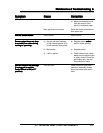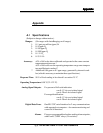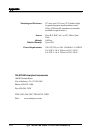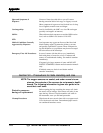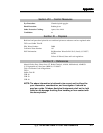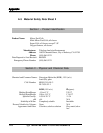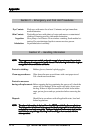
A-6
AppendixAppendix
AppendixAppendix
Appendix
TELEDYNE ANALYTICAL INSTRUMENTS
Contact of electrolyte with skin or eyes will cause a
burning sensation and/or feel soapy or slippery to touch.
Other symptoms of exposure to lead include loss of sleep,
loss of appetite, metallic taste and fatigue.
Carcinogenicity: Lead is classified by the IARC as a class 2B carcinogen
(possibly carcinogenic to humans).
OSHA: Where airborne lead exposures exceed the OSHA action
level, refer to OSHA Lead Standard 1910.1025.
NTP: na
Lead exposure may aggravate disease of the blood and
blood forming organs, hypertension, kidneys, nervous
and possibly reproductive systems. Those with preexist-
ing skin disorders or eye problems may be more suscepti-
ble to the effects of the electrolyte.
In case of contact with the skin or eyes, immediately
flush with plenty of water for at least 15 minutes and
remove all contaminated clothing. Get medical attention
immediately.
If ingested, give large amounts of water and DO NOT
INDUCE VOMITING. Obtain medical attention immedi-
ately.
If inhaled, remove to fresh air and obtain medical
attention immediately.
Medical Conditions Generally
Aggravated by Exposure:
Signs and Symptoms of
Exposure:
Emergency First Aid Procedures:
NOTE:The oxygen sensors are sealed, and under normal circum-
stances, the contents of the sensors do not present a health
hazard. The following information is given as a guide in the
event that a cell leaks.
Section VII – Precautions for Safe Handling and Use
Before opening the bag containing the sensor cell, check
the sensor cell for leakage. If the sensor cell leaks, do not
open the bag. If there is liquid around the cell while in
the instrument, wear eye and hand protection.
Cleanup Procedures: Wipe down the area several times with a wet paper towel.
Use a fresh towel each time. Contaminated paper towels
are considered hazardous waste.
Protective measures
during cell replacement:



